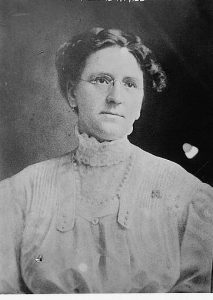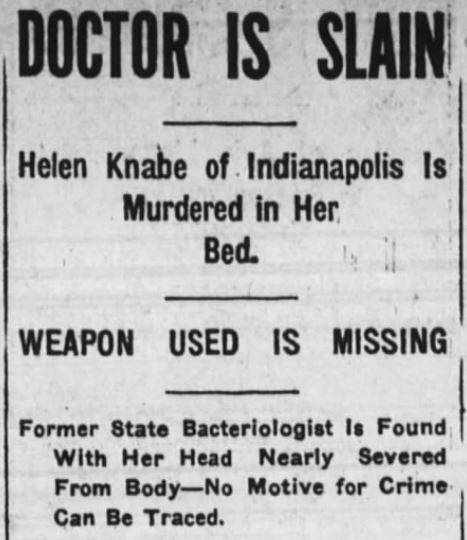
Photo info …
Credit: Library of CongressView Source
(Dec. 22, 1875-Oct. 24, 1911). Raised in Rügenwalder-Münde (then in Prussia, now Darlowko/Darlowo, Poland), Knabe lost her parents early in life. Her father, Otto Windschild, a structural engineer, abandoned Knabe and her mother, who died a few years afterward. Daniel Ehmke, an uncle, raised her.
Knabe emigrated from Germany to Indianapolis in 1896 to become a doctor. (Medical schools in Prussia banned women until 1908.) Knabe cleaned and sewed clothing to earn money and to learn English. She attended to complete medical prerequisites. In 1900, Knabe entered the Medical College of Indiana (MCI) (see ). While in college, Knabe illustrated medical books. Dr. , a leading MCI faculty member who established its pathology museum, chose Knabe as his only preceptee. Under Wynn’s direction, she headed the pathology labs and taught other students.
On April 22, 1904, Knabe graduated from MCI. She held many positions after graduation including curator of MCI’s pathology museum, the first female clinical professor at MCI, and medical consultant. She was the first female state deputy health officer at the Indiana State Board of Health (ISBH). She also served as the first assistant state pathologist and assistant superintendent of the ISBH Bacteriological and Pathological Department.
Knabe proved the existence of rabies in Indiana through the rapid rabies diagnosis, which she learned from Dr. Anna Wessels Williams at Johns Hopkins University. In 1908, Knabe resigned from the ISBH, citing discrimination. Knabe had been named acting superintendent, and Dr. , secretary of the ISBH promised her the position in the new fiscal year. Hurty claimed that the state did not have the budget to pay Knabe, but he then recruited other physicians, stating that he wanted a “real capable man.” Hurty promised the new superintendent two times Knabe’s pay.
After resigning from the ISBH, Knabe’s career flourished. She became secretary of the National Public Health Education Committee and was elected chair of Hematology and Parasitology at the Indiana Veterinary College (IVC), which operated in Indianapolis between 1892 and 1924. This appointment as a department chair predated any other held by a woman at a North American veterinary college.
Knabe also served as medical director of the , the oldest school of physical education in the U.S. which later became part of (IUPUI). An innovator in medical education, Knabe ran her own lab and private practice, published and presented medical papers, and created outreach programs to teach and treat patients. She pioneered public sex education, teaching women safe sex practices across ethnic and socioeconomic groups.
Knabe died on October 24, 1911, with police declaring it a suicide. The coroner, Dr. Charles O. Durham, determined Knabe was murdered. Female physicians funded a private investigation. Through efforts of the private detective they hired and a grand jury investigation that followed, over a year later the state indicted two men, Dr. William B. Craig, the dean of students at the IVC and Alonzo Ragsdale, an undertaker, with her murder.

Craig’s accusers believed that murdering Knabe was his way of breaking off their relationship. Ragsdale, who was also the executor of her estate, was accused of covering up the crime by hiding and laundering her kimono, which was found to have blood on it.
The prosecution sought to prove Craig’s guilt by showing he had a history of breaking off relationships and paying cash to the ruined women. Unfortunately, many of the witnesses did not show up at the trial, and other witnesses flipped their stories. The defense blocked the state at every turn.
After nine days, the judge acted as the 13th juror and instructed the jury to acquit, which was unusual as no technical error had been committed. He stated that although the State proved Knabe was murdered, it did not prove Craig killed her. As a result, charges against Craig and Ragsdale were dropped. Knabe’s murder remains unpunished. She was buried in .

Help improve this entry
Contribute information, offer corrections, suggest images.
You can also recommend new entries related to this topic.

